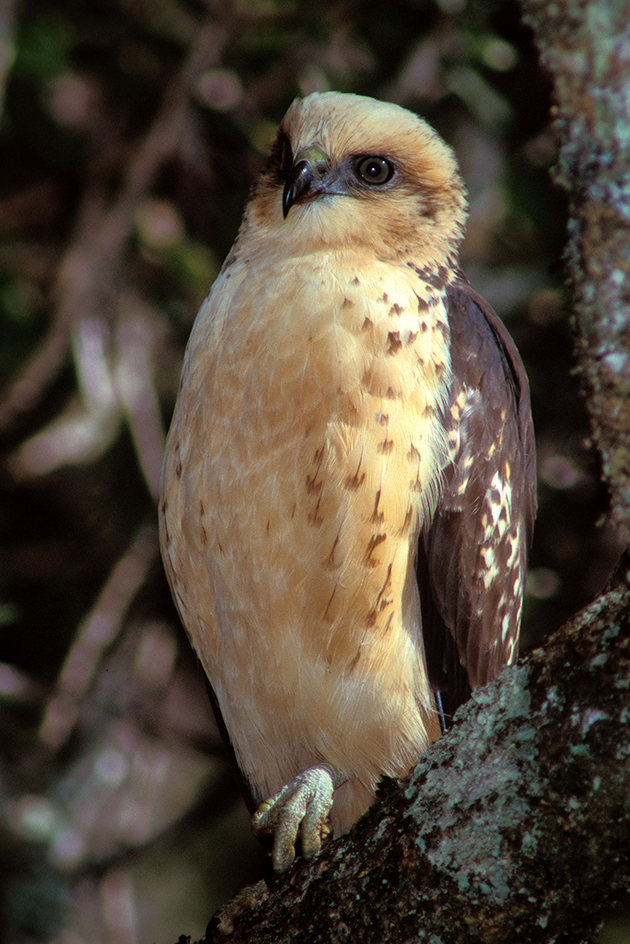Hawaiian hawk , also called the ‘Io, is the only hawk native to the Hawaiian Islands. The hawk is found nowhere else in the world. In Hawaiian culture, Hawaiian hawks are traditionally considered family or personal gods. They also are a symbol of Hawaiian royalty.

The Hawaiian hawk may have either dark or light coloring. These alternate colors are called phases. Adult dark phase hawks are mostly brown, with a touch of white and orange just below the breast. Adult light phase hawks have dark crowns and chins. They have white throats and breasts with brown flecks. Males and females do not differ in coloring. Females are larger than males. Adult females weigh about 20 ounces (570 grams). Adult males weigh about 14 ounces (400 grams). Males are about 16 inches (41 centimeters) long. Females are about 18 inches (46 centimeters) long.
The Hawaiian hawk lives in and around forests. It often soars over the edge of the forest, searching for prey. The hawk lives at elevations ranging from sea level to about 6,500 feet (2,000 meters). It hunts during the day. Before the arrival of humans, the hawk fed on native birds and insects. The introduction of foreign animals by human beings has expanded the hawk’s prey. It now feeds on foreign birds, insects, and mammals, especially rats. The hawk is able to kill and consume prey of an impressive size. For example, it occasionally takes pheasants, which greatly outweigh it.
Hawaiian hawks mate for life and maintain their territory the year around. Mates build a large stick nest and line it with green vegetation. The female usually lays only one egg. Eggs hatch after about 38 days. The young fledge (become ready to leave the nest) after 59 to 63 days.
Perhaps only a few thousand Hawaiian hawks survive in the wild. Like other Hawaiian birds, the hawk has suffered from changes caused by humans. People have introduced many foreign plants and diseases that affect the Hawaiian hawk. The hawk is especially threatened by the destruction of native forests.
